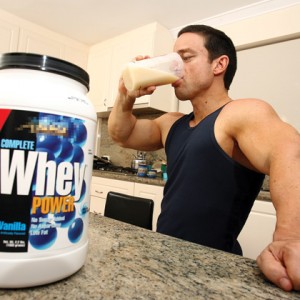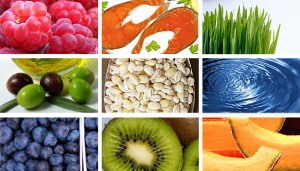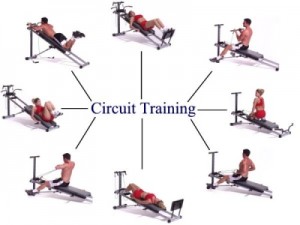 I’m not a nutritionist, nor do I play one on TV, but I have been in this game long enough to know what makes sense and what doesn’t. The following lists of 10 habits for healthy eating come from Dr. John Berardi of Precision Nutrition but have become my own recommendations for the simple reason they make sense.
I’m not a nutritionist, nor do I play one on TV, but I have been in this game long enough to know what makes sense and what doesn’t. The following lists of 10 habits for healthy eating come from Dr. John Berardi of Precision Nutrition but have become my own recommendations for the simple reason they make sense.
1. Eat every two-to-three hours
There are many reasons for this, but chief among them are two things: firstly, this will stabilize blood sugar levels making you feel like you have more energy all day long. Secondly, if you are continually putting high-quality fuel into your body for energy, your body will realize that it doesn’t need to store energy (fat) and will break it down and excrete it.
Many complain about this rule, citing lack of time. I will just say this: if you don’t have five minutes spare every three hours you need to work on your time-management skills as well as you’re eating habits. Don’t think of these as ‘meals’ but as a chance to continue putting good fuel in your body. Sometimes this will necessitate a bigger meal, other times it may be as simple as some yoghurt and a piece of fruit.
2. Eat protein with every meal
For a man, consume 40–60g of protein at every single feeding opportunity and women 20–30g. Most animal protein sources have roughly 20g of protein per 100g of weight — e.g. chicken is 18g/100g, salmon is 22g/100g, beef is 21g/100g. So for an average guy you need a serve of protein that is about 200g, or slightly bigger than the palm of your hand.
Protein has an interesting effect on the body. It is made up of tightly connected building blocks called amino acids. Breaking these bonds to digest the food is very costly to the body and actually causes protein to be quite expensive from an energy-use point of view, far more so than either fat or carbohydrate, which are the only two other choices. This is one of the reasons why people lose weight on high-protein diets: their body is forced to work harder to absorb the food they are putting in.
3. Eat vegetables or fruit with every meal
At every single feed you need to eat a minimum of one cup of vegetables or fruit, preferably vegetables. Your mum was right — you need to eat your vegetables. There are numerous plant-based foods that have been shown to have a high correlation to preventing cancer, such as cruciferous vegetables like broccoli, cauliflower and cabbage, as well as others, like spinach, that are high in iron. Others, like berries, have been shown to have a huge benefit on helping the body detoxify and boost the immune system. For most, simply eating this suggested amount of fruit and vegetables per day will handle all of their carbohydrate demands — you really only need about 50g per day, or about the same amount found in two apples.
4. You can eat ‘other’ carbohydrates, but only after intense exercise
This, along with the meal timing, is people’s number one issue. Let me ask you a question: have you ever heard of essential fatty acids? Essential, in this term, means that without them we die. The same goes for essential amino acids — protein we cannot live without. Yet there is no such thing as an essential carbohydrate, and anyone who says there is probably works for Uncle Toby’s.
During intense exercise we use carbohydrates as an energy source. Post-training, the body needs these stores to be replenished, and during the first 30 minutes after training we can absorb carbohydrate without risking storing it as body fat instead.
The key regarding carbohydrate intake is this: you can have them, but you have to earn them, and even then you only need to ingest as much as you burned. A gym session that would leave you sore for days may only burn about 500 calories — the equivalent of two cups of cooked rice. You simply don’t need more than that.
5. Drink only zero-calorie beverages
The list of liquids that has zero calories is: water, green, herbal and black tea, and black coffee. If it’s not on this list, you don’t get to drink it.
This is another huge stumbling block for people. I have clients tell me they simply can’t go without alcohol for a certain period of time (usually four months, in our weight loss plan). Let me say this: if you cannot give up alcohol for four months, you are addicted and should seek counseling. This also means no soft drinks, fruit juices, adding milk or sugar to hot drinks. Learn to enjoy water and green tea — the list of benefits of both is too long to list here.
6. Consume healthy fats at every meal
Healthy fats are found in nuts and seeds, avocado, olive oil and fish oils.
Fat is an essential nutrient. It’s also our number-one fuel source and we’re covered in it for a very good reason. Along with using high-quality olive oil in cooking, the easiest way to add these beneficial fats in is to take fish oil capsules. There are two fats in particular, DHA and EPA, that are very good for us and we need about 2000mg daily. In most brands of fish oil capsules, this equates to either eight or 10 per day. The easiest way to do this is simply have two with every meal.
7. Eat whole foods
By eating real foods you speed up your body, as it is forced to digest them and break down all the fibre, amino acids and other nutrients. You don’t get this same benefit if you simply swallow a protein shake. Learn to eat your food in its rawest form possible to get the maximum possible benefit from your diet.
Supplements are such a huge waste of money for most. They represent the very tip of the performance-eating pyramid. Most try to make up for their lack of diet consciousness by using this or that supplement. Nail down the most important stuff — the first six habits — and I guarantee you won’t feel like you need to even use any of the miracle powders and potions that do little more than give you expensive urine.
You are what you eat, so don’t be quick and easy.
8. Eat from a wide variety of sources
There are approximately 15,000 different foods on the planet. Chances are you eat about 40 of them on a regular basis. Expand your tastes to include seasonal fruits and vegetables, different types of meat, fish and nuts and seeds, and you’ll likely discover your body feels better than ever.
9. Be prepared
Prepare your food ahead of time. The single biggest mistake I see people make when trying to boost performance or lose weight is thinking they’ll be able to find the right meal choices on the run. You won’t. The most successful strategy is to buy food twice per week and prepare it right then. Wash and cut all your vegetables, cook all the meat for salads and then place it in Tupperware containers ready to go. Each day, as you head out the door for work, you should have the contents of all your meals for the day ready to go with you.
10. Break the rules 10 per cent of the time
Trying to eat 100 per cent by the rules all the time will lead to serious mental burnout and likely you will fall so far off the wagon at some point you won’t get back on for months, if ever.
A simple rule of thumb: if you eat five times per day, which is 35 meals per week, so seven meals out of every fortnight you can break the rules. Feel like a beer? If you have one on Friday night, that counts as a cheat meal. Likewise if you eat a big bowl of pasta during the day without having had a hard workout beforehand.
But here’s the thing: break a single one of these 10 rules and it counts as a 10 per cent meal. So if you went four hours without eating, that’s a cheat. So is not having your fish oil or adding milk to your coffee. Most people go through about three weeks’ worth of cheat meals every two or three days and then wonder why they can’t get into shape.
A 10 per cent meal should be a treat, meaning a once-every-now-and-then thing. Simply making it through half a day’s work to the afternoon doesn’t necessitate celebrating with a can of coke and a few Tim Tams!
These 10 simple habits are easily sustainable from day to day. I’ve been following these for over a decade now and can honestly say that a large portion of my health and fitness is due to my healthy eating habits. Try them for yourself and see.



